How To Capture Northern Lights On Iphone
If you want to photograph the Northern Lights, a good starting point is:aperture f/2.8 or the widest possible in your lens, ISO 3200-6400, and a shutter speed between 1 -15 seconds depending on the Northern Lights activity. The quicker the Aurora moves, the faster your shutter speed should be.
However, photographing the Northern Lights goes beyond adjusting a few settings. I still remember how excited I was before my first Northern Lights trip and how challenging it turned out to capture the Aurora Borealis.
If you want to learnhow to photograph the Northern Lights and skip the tedious trial and error, keep reading. I've prepared thisNorthern Lights guide where you'll find thebest way to photograph the Northern Lights like an expert!
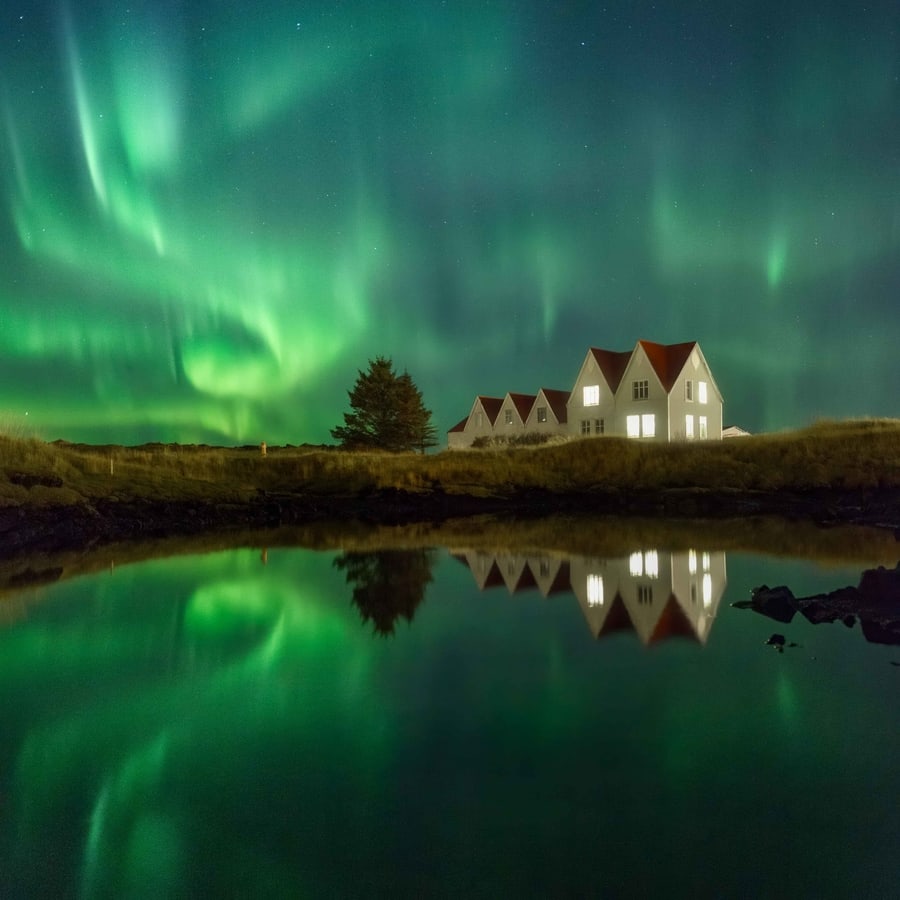
In a nutshell, these are the best steps to photographing the Northern Lights:
- Use an aperture of f/2.8 or the widest in your lens
- Adjust an ISO from 3200 to 6400
- Set a shutter speed between 1-15 seconds
- Adjust your white balance to 3500k
- Focus manually on a distant light
- Set the general camera settings for Northern Lights
- Select a shutter delay of 2 seconds
- Check your Northern Lights shot histogram
Also, after the best steps, you'll find a section with the best gear, compositions, and tips to shoot the Northern Lights.
GET YOUR FREE EBOOK!
- PHOTOGRAPHING THE NORTHERN LIGHTS -
BEST SETTINGS, GEAR, PLANNING, TIPS, AND MORE!
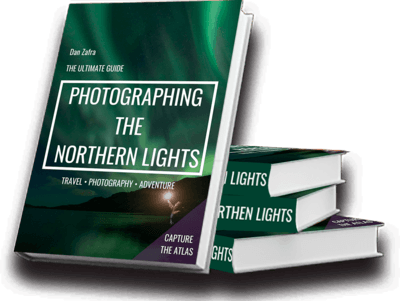
1. Use an aperture of f/2.8 or the widest in your lens
The aperture is the first setting that you need to adjust to take pictures of the Northern Lights.
Toshoot the Northern Lights correctly, it's fundamental to choose thebest exposure settings for Northern Lights photography: aperture,ISO, and shutter speed. The goal is to adjust these settings so you can capture as much light as possible while using a short shutter speedaccording to the movement of the Aurora.
As in any type of night photography, you should setthe widest aperture in your lens to capture as much light as possible.
If you can, try to use an aperture of f/2.8 or lower. The wider the aperture, the more quality you'll see in your Aurora images with less digital noise. For this, it's important to use a good lens for Northern Lights photography.
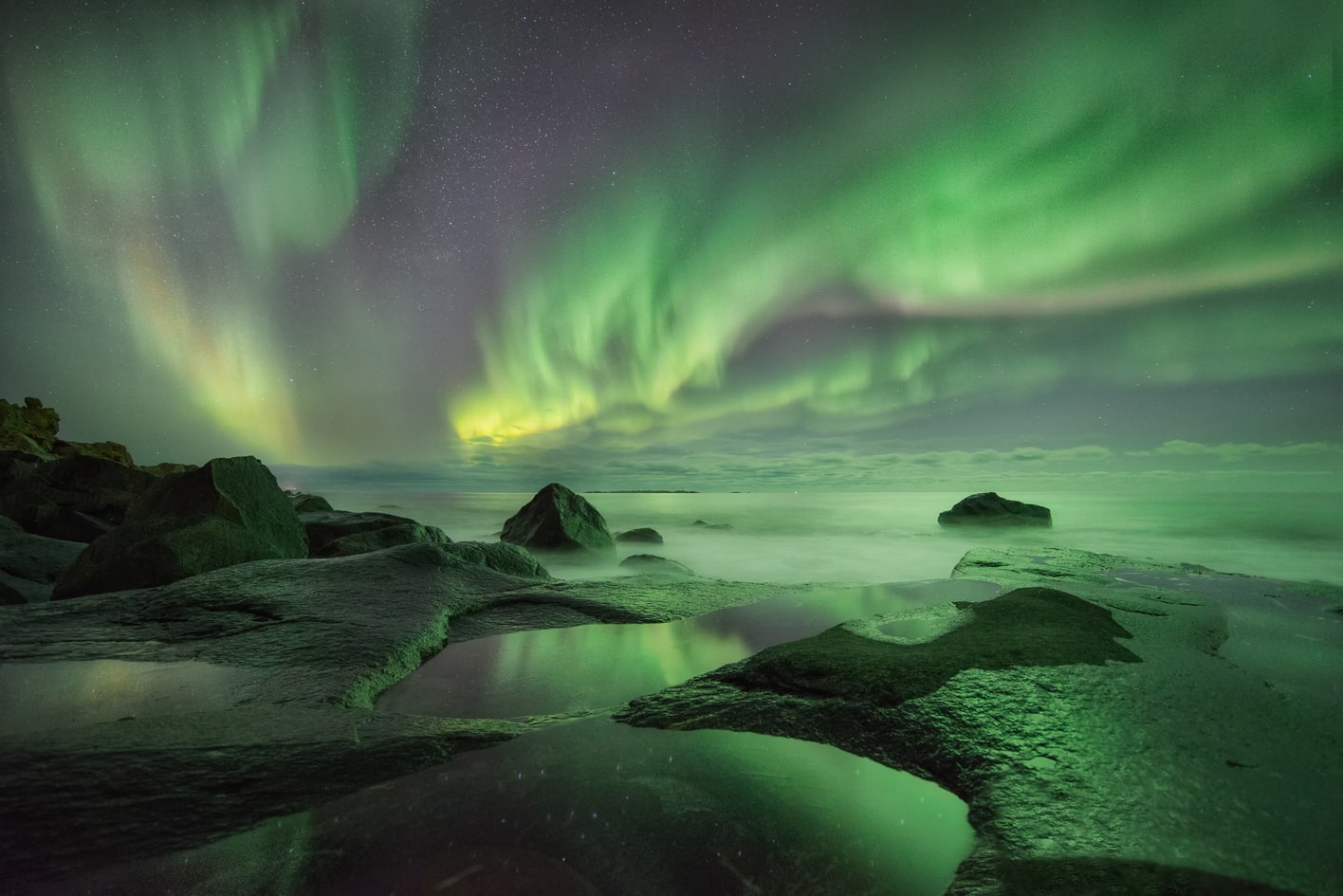
1. Use an aperture of f/2.8 or the widest in your lens.
2. Adjust an ISO from 3200 to 6400
Using thebest ISO for Northern Lights photography is crucial. It will allow you to have the right exposure using a shorter shutter speed, which is the ultimate goal in Aurora Borealis photography.
To capture the Aurora, you have to raise your camera's native ISO as high as possible, ideally between 3200 and 6400. However, the right ISO setting for the Northern Lights depends on three main factors:
- Your camera: It varies from one model to another, but generally, high-end cameraswith Full-Frame sensors can set a higher ISO for capturing the Northern Lights, usually between ISO 5000 and 12800.
If you use an entry-level camera with a crop-sensor and you raise your ISO over the limit, it's very likely that you'll find digital noise and you won't get a quality image. With this type of camera, I recommend maintaining an ISO of 3200 or lower.
We'll see more about the best cameras for Northern Lights below.
- The moonlight: When there is a big and bright moon illuminating the landscape, you can take advantage of this light by setting a lower ISO, usually between 800-3200 depending on the brightness.
- External artificial lights: If you're photographing the Northern Lights in a scene with external lights, such as street or house lights, you should set a lower ISO, or the highlights will be blown out in your Aurora shots.
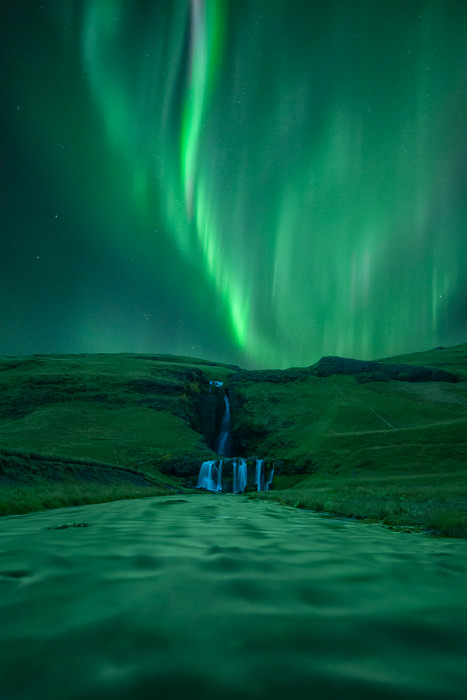
2. Adjust an ISO from 3200 to 6400.
To capture clear and sharp shots, I recommend checking our article on how to take noise-free images. After all, if you find some noise in your photos, don't worry; you can always eliminate it using any of the best noise reduction software.
3. set a shutter speed between 1-15 seconds
The last and most important exposure setting for Northern Lights photography is the shutter speed. The exposure time is the most challenging setting for shooting the Northern Lights, mainly for one reason: the Aurora Borealis is unpredictable.
Unlike other types of night shots like Milky Way photography, where the stars determine the maximum exposure time, the shape and brightness of the Aurora constantly change. This means that you need to adjust the shutter speed according to every specific situation.
Generally speaking, the stronger, more dynamic, and brighter the Northern Lights are, the faster the shutter speed you need to freeze the shape and movement of the Aurora in your Northern Lights images.
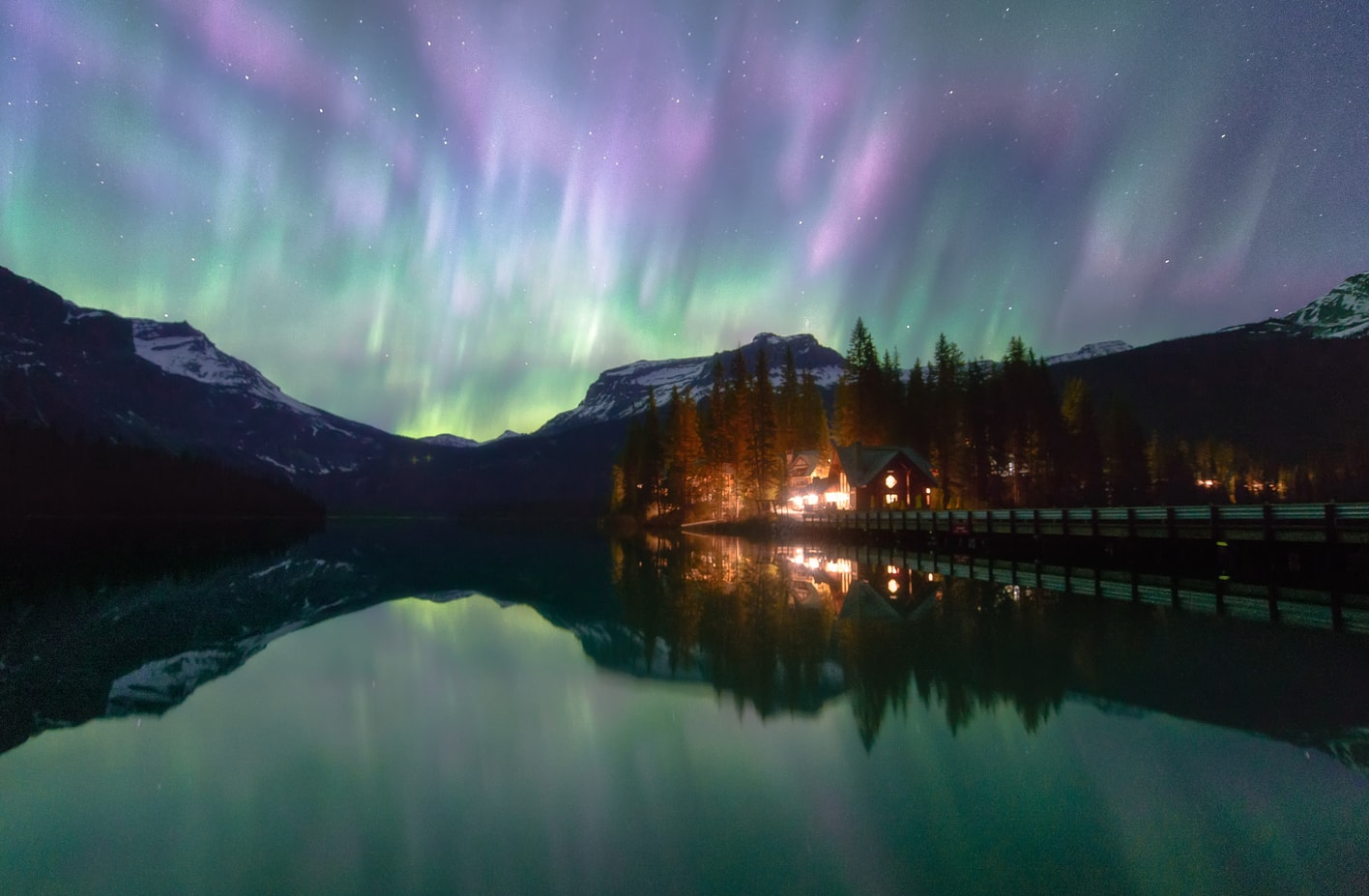
3. set a shutter speed between 1-15 seconds
You can use this guide toshutter speed for the Northern Lights as a reference:
- Faint and static Auroras: When the Auroras are very weak and not clearly visible to the naked eye, use a shutter speed between 8 and 25 seconds.
- Vibrant Auroras: If the Northern Lights are visible to the naked eye and show some movement, your shutter speed should range between 3 and 8 seconds.
- Very strong Northern Lights: When the Auroras are very active and they're moving fast, you should use a very short shutter speed from 0.5 to 3 seconds to freeze their movement and avoid blowing out the highlights.
4. Adjust your white balance to 3500k
In Northern Lights photography, you should always set a manual White Balance.
A good starting point is to set yourNorthern Lights white balance around 3500 Kelvin, which is when the Northern Lights show a more natural color.
Although you can change the white balance in post-processing when you shoot in Raw, it's better if there's color consistency in your Aurora images. Besides, it'll make your Northern lights editing step faster.
This is especially important when the Aurora spreads across the sky, and you want to take a Northern Lights panorama.
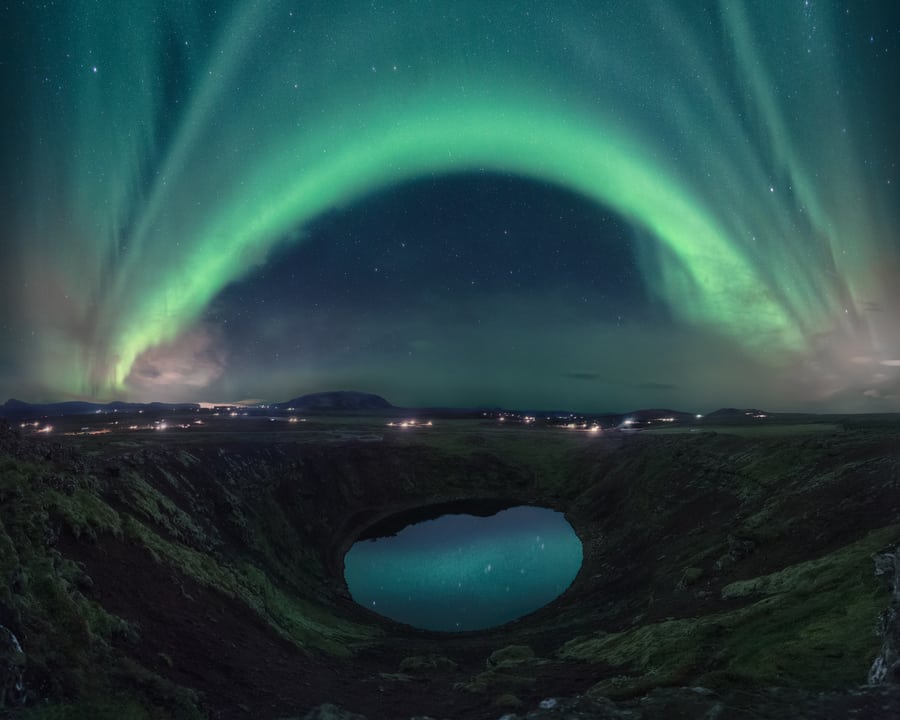
4. Adjust your white balance to 3500k
Here you can see a series of examples of how the Northern Lights look when captured usingdifferent white balance settings.
5. Focus manually on a distant light
The excitement and the rush involved inNorthern Lights photography are directly correlated to making mistakes, especially when trying to correctly set the focus for the Northern Lights.
To avoid this andtake sharp images, I suggest following theseNorthern Lights focusing steps:
- Try to adjust the focus to infinity before the session when there is still daylight. You can focus either manually or automatically on any subject far on the horizon.
- If you need to focus at night, set the live view mode on your camera, zoom in on a distant light, like the moon or a bright star, andmove the focus ring of your lens manually until you can find the sharpest point.
Some cameras can automatically focus at night, but most of them struggle to do this, so I always recommend adjusting the focus manually when you're in low-light conditions.
Important note:Regardless of the focus method, once the focus is set,leave the focus mode as manual and don't move the focus ring during your entire Northern Lights session unless you change your lens or focal length.
Another key tip forfocusing in Northern Lights photography is to open the captured Aurora image on your LCD screen and zoom in on the stars to check if your focus is correct.
I try to do this from time to time during an Aurora session, especially when I move from one location to another, since you can accidentally move the focus ring. This is one of the best focusing tips in photography.
Many photographers recommendfocusing at the hyperfocal distance, but if you want to make sure that your stars are sharp, I don't recommend this method.
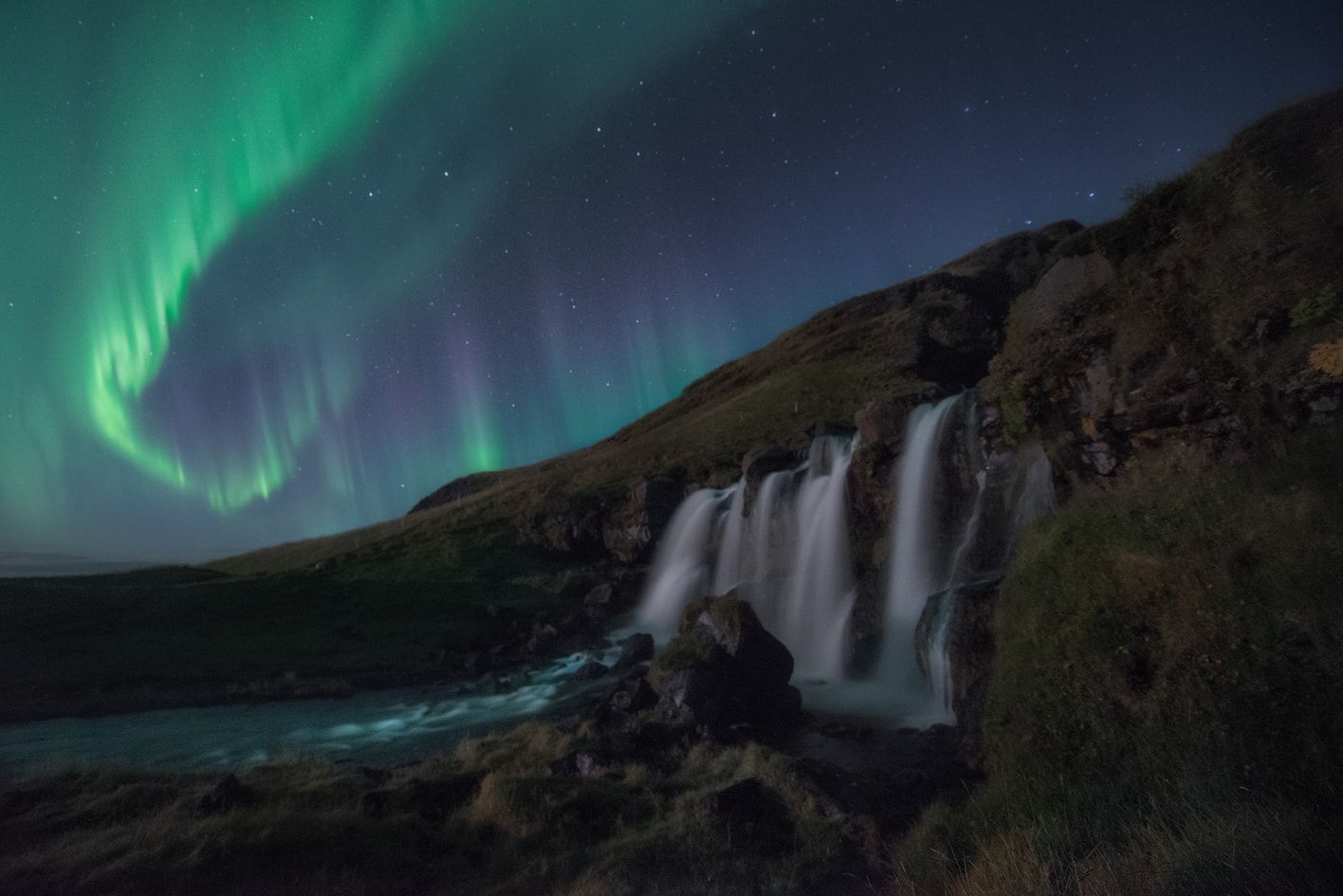
5. Focus manually on a distant light.
6. Set the general camera settings for Northern Lights
The generalcamera settings for Northern Lightsare not very different from the common long exposure night photography settings.
Beforetaking pictures of the Northern Lights with a Mirrorless or DSLR camera, I always suggest adjusting the following settings:
- Screen brightness: The first thing is to turn down your LCD screen brightness. That way, you'll see a more realistic preview and avoid underexposing your Aurora shots.
- Shoot in RAW: Do this to capture as much information as possible both in the highlights and the shadows. This is fundamental for post-processing in Northern Lights photography.
- Long exposure noise reduction: Turn this setting off. This will slow your camera down and you can't miss a second when you're chasing the Aurora. You can reduce the noise in post-processing using Denoise AI or another piece of software.
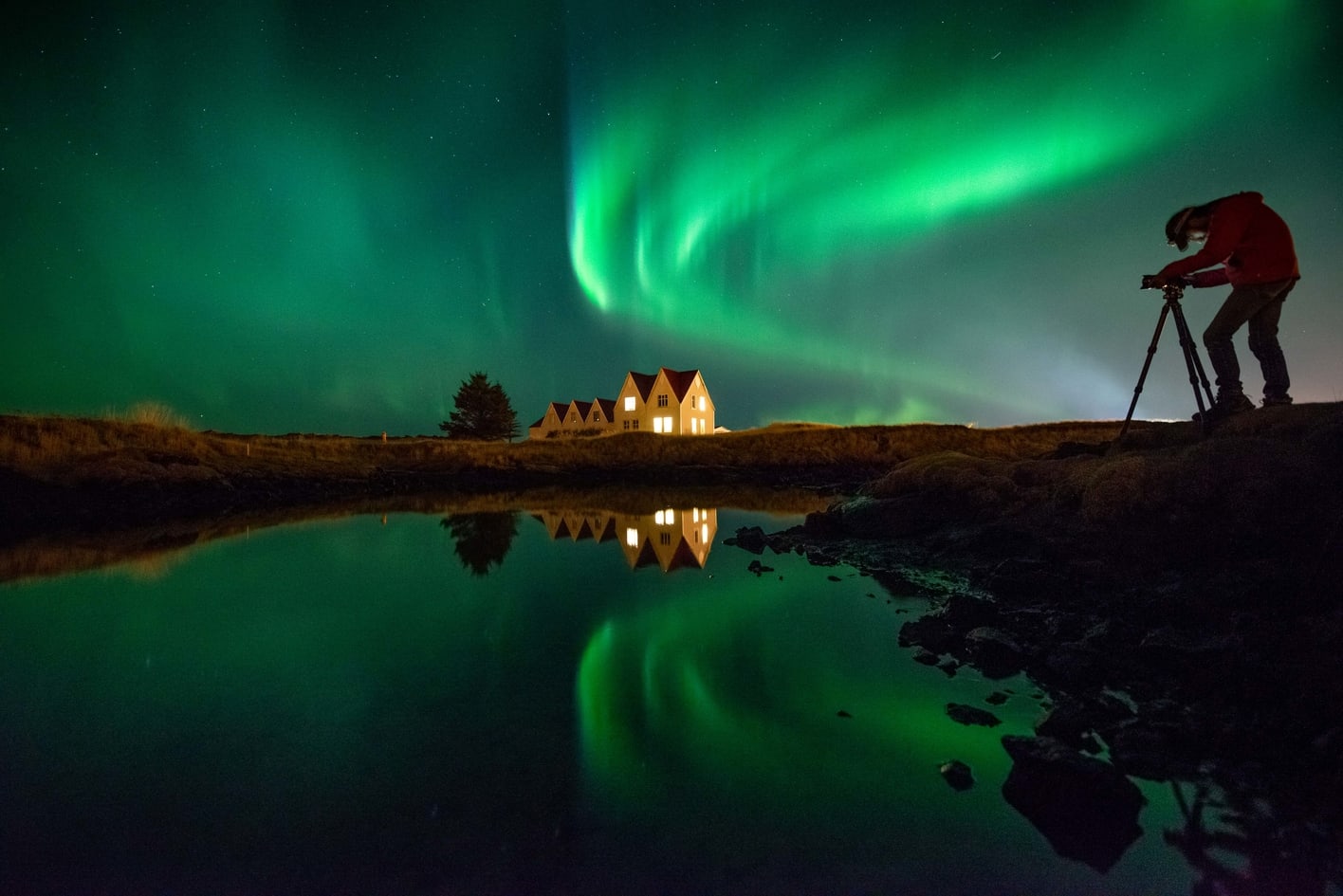
6. Set the general camera settings for Northern Lights
7. Select a shutter delay of 2 seconds
To take the sharpest images, make sure your camera is on a steady tripod and set a shutter delay of 2 seconds. If it's windy, you can change the delay to 5 seconds. The reason for this is to avoid any possible vibrations when you press the shutter button.
You can also use a shutter releaseor an intervalometer. Since shooting the Northern Lights requires you to constantly move according to the movement of the Aurora, I'm usually more comfortable using the internal shutter delay. I just use the intervalometer when I'm shooting a Northern Lights time-lapse.
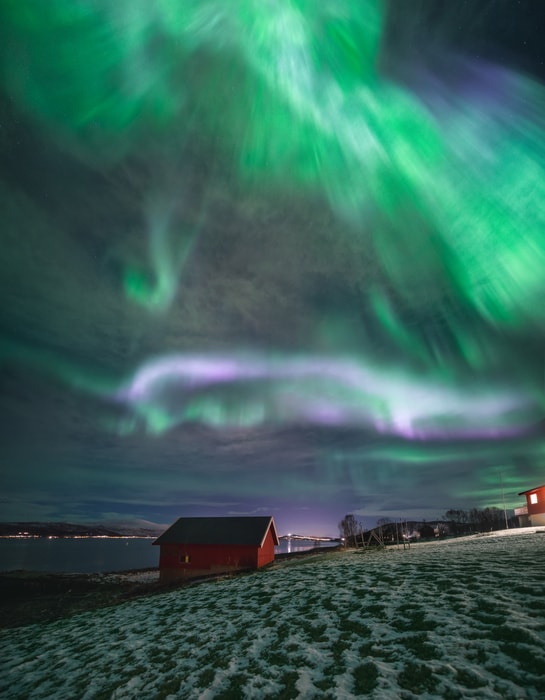
7. Select a shutter delay of 2 seconds.
8. Check your Northern Lights histogram
To verify that you're using the best Northern Lights settings, open the Aurora image on your camera's LCD screen.
Zoom in on the stars and check if everything is in focus. Then check the histogram in your Northern Lights photographs. You can learn how to read the histogram here.
The camera brightness, external lights, and general light conditions can trick your eye when youcheck the Aurora images on your camera screen, so the best way to take Northern Lights pictures while making sure that the exposure is correct is by checking the histogram.
Ideally, the histogram should tilt towards the left, but make sure that you don't clip the blacks. It's crucial to check that you aren't clipping the highlights, which is very common when the Aurora activity increases.

8. Check your Northern Lights histogram
As you can see, shooting the Aurora is not difficult if you know the basics. This is a summary of all the steps you need to follow to photograph the Northern Lights:
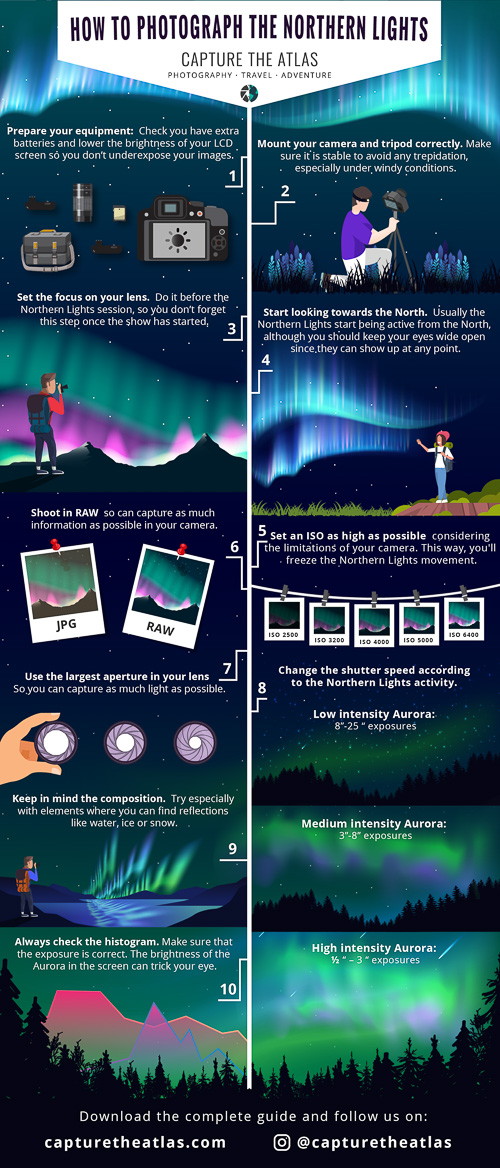
However, in Northern Lights photography, there are other crucial things to consider beyond the main camera settings. Below, we'll dive into other fundamentals to succeed in your Northern Lights chasing experience:
- Best camera gear for Northern Lights
- Composition for taking Aurora images
- Other tips on how to shoot the Northern Lights
Best camera Gear for Northern Lights photography
Having the right camera gear for Northern Lights photography is essential to get the best possible images.
CAMERAS FOR NORTHERN LIGHTS
Regarding cameras, there's a significant difference between Full-Frame cameras and cameras with smaller sensors. Yes, you can photograph the Northern Lights with a GoPro, compact camera, or even an iPhone, but don't expect the same quality.
Full-frame cameras are the best because they usually have bigger pixels that allow your camera sensor to capture more light. In this range, cameras with fewer megapixels are better for the Northern Lights. (More info about this in our camera sensor size article).
You can find much more information about what makes a great camera for Aurora photography and the best models in myguide to the best Northern Lights cameras in 2021.
LENSES FOR AURORA PHOTOGRAPHY
Camera lenses are as equally important (or even more) than the camera. The easiest and most effective way to photograph the Aurora is using a fast wide-angle lens.
Any focal length between 12mm and 24mm will allow you to capture a reasonable area of the night sky and the ground. Prime lenses are usually faster and lighter, but they're less versatile than zoom lenses. This is a matter of taste; zoom lenses makes photography composition easier, while prime lenses will provide the best quality, especially those with an aperture of f/2.8 or below.
You can find a full list of the best models in my article on the best lenses for Northern lights in 2021.
Other pieces of gear for the Northern Lights
Some other pieces of gear that you'll need are the basics for any type of night shooting like a tripod, headlamp, intervalometer, etc.
I highly recommend taking some photography gloves to stay warm during your session. Shooting the Aurora at high latitudes can be challenging, especially during the wintertime. In my case, I always wear the Heat 3 Smart photography gloves from The Heat Company.
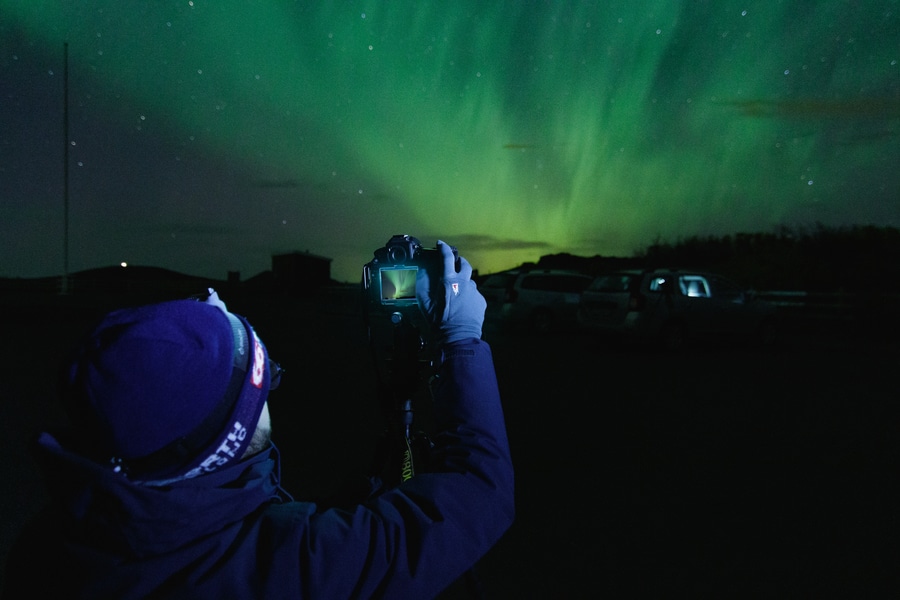
Camera gear is fundamental in Northern Lights photography.
A good tip related to camera gear for the Northern Lights is to rent a camera or lens for your Northern Lights trip. High-end camera gear is expensive, so sometimes it makes sense to rent for a particular trip, especially if it's your first time shooting the Aurora and you don't know if you'll use it again.
In my case, I always like testing new lenses and cameras during my Northern Lights Photo Tours, and I always rent with this company. They operate within the US, and you can get a 15% discount using the codeATLAS 15.

Composition for Northern Lights pictures
Once you know how to capture the Northern Lights, the most common mistake in Northern Lights photography is forgetting about composition.
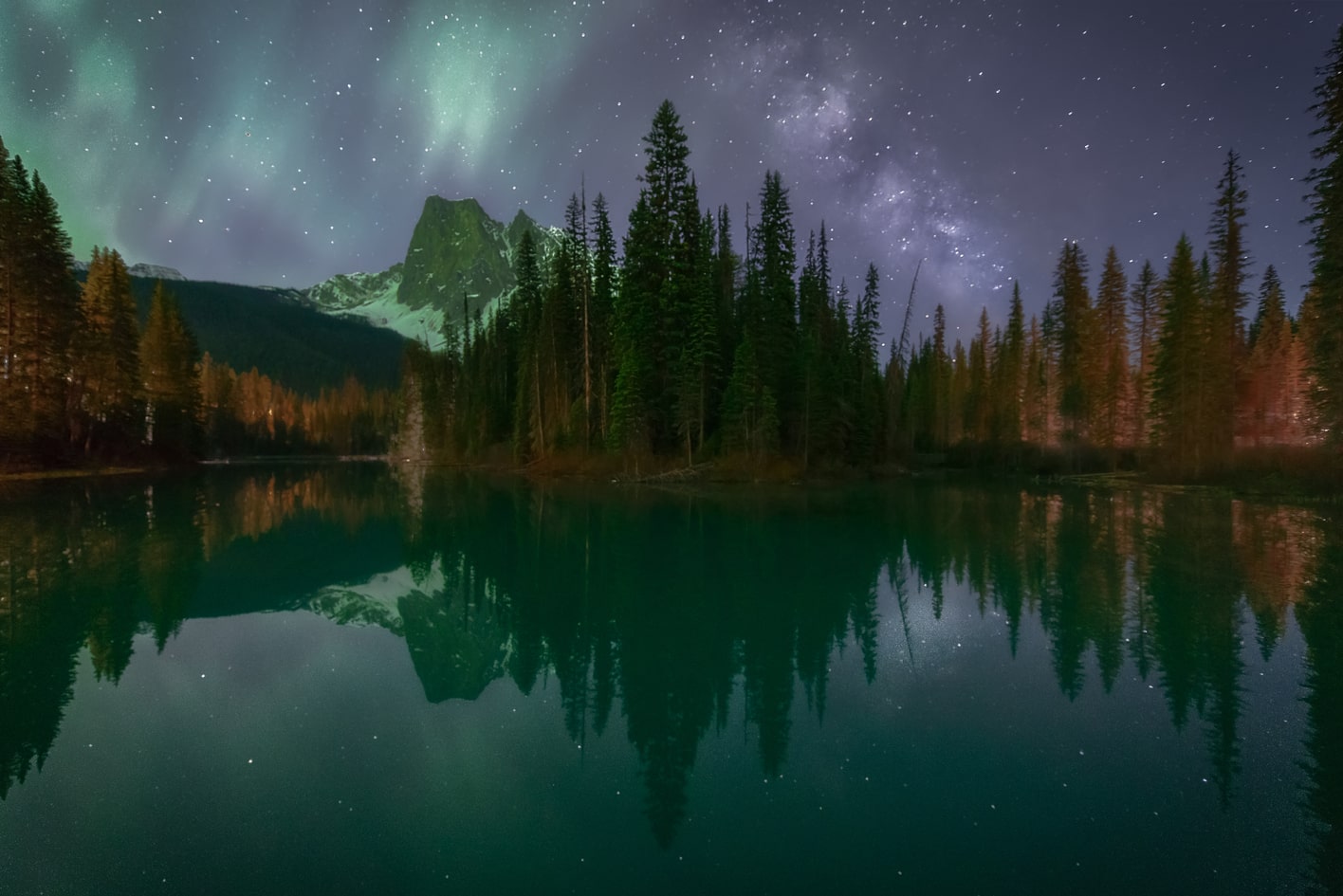
Composition for Northern Lights pictures
The initial reaction, especially if it's yourfirst time photographing the Aurora, is to point your camera to the sky and shoot.
Sometimes, the Northern Lights are so vivid and colorful that just a picture of the sky with the Aurora might be beautiful. However, in most cases, the best way to photograph the Northern Lights is by creating a composition as if you were capturing a normal night scene, considering not only the sky but also the ground.
Although you can find the best photography composition rules in this article, here are a few tips on Northern Lights photography composition:
- Look at the sky, but don't forget about the ground.
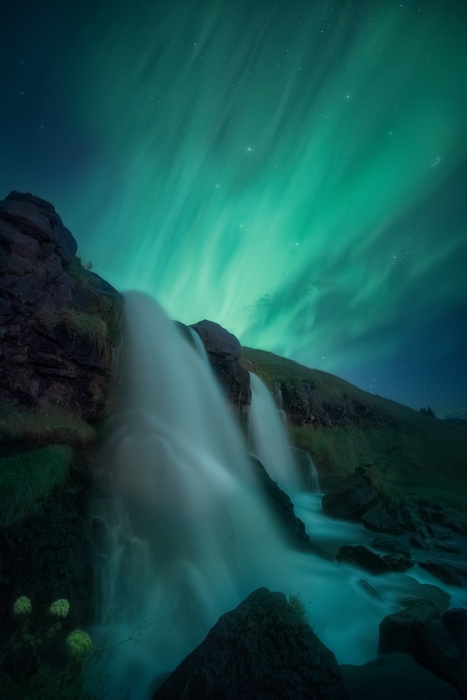
- Try to include elements that can reflect the Aurora, like water, snow, or ice.
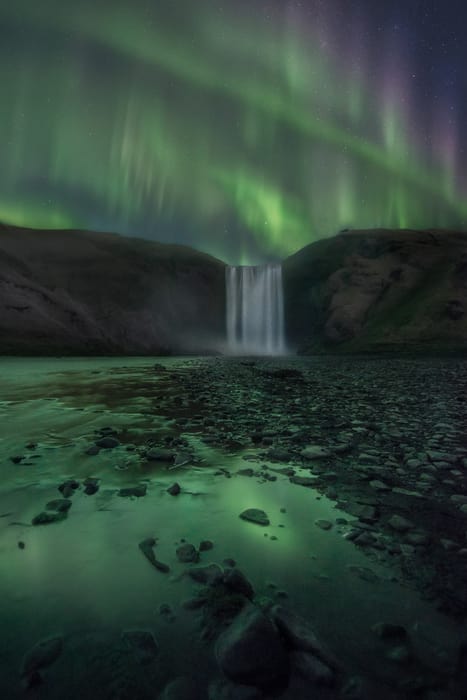
- Be flexible and look for compositions according to the movement of the Aurora.
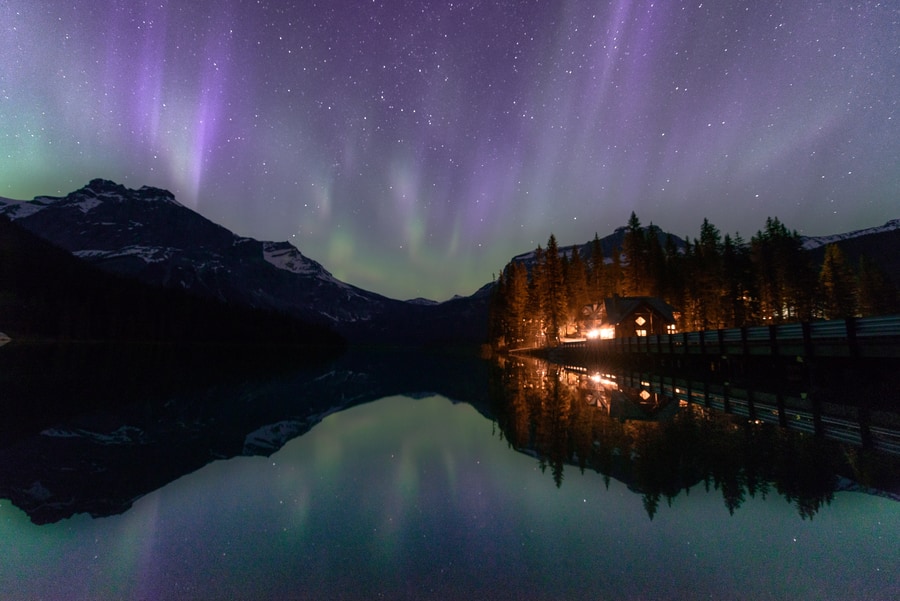
- Use vertical compositions when the Aurora is forming the famous "Northern Lights crown."
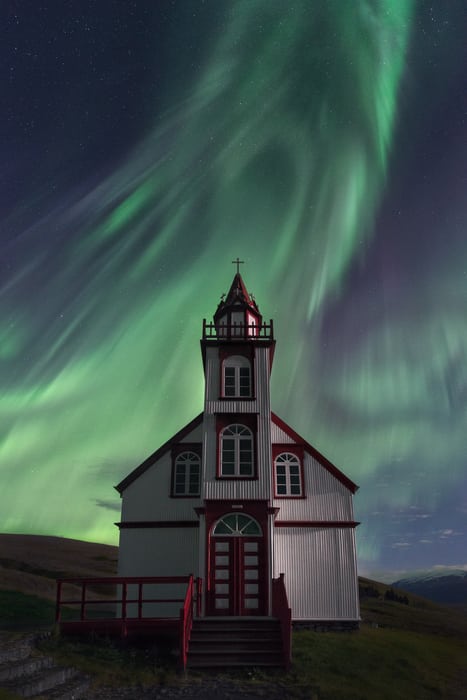
- Create panoramas when the Northern Lights "dance" across the whole sky.
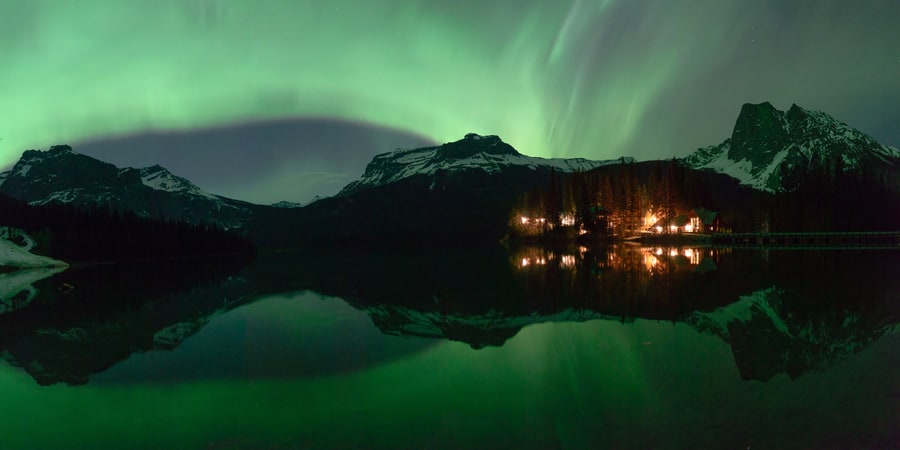
- If you manage to capture a mirror reflection, place the horizon in the middle of the frame.
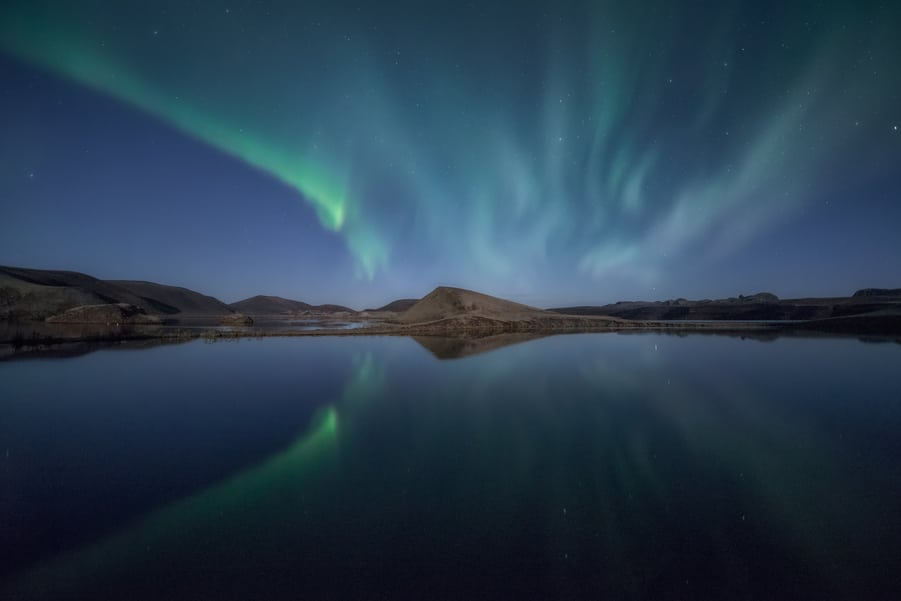
- Use human elements to give some sense of scale.
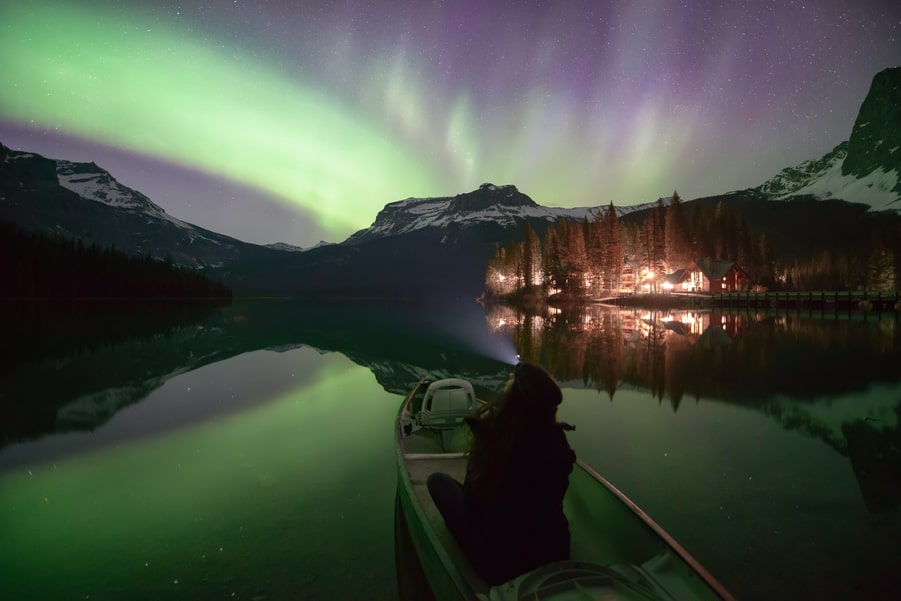
Other tips on how to photograph the Northern Lights
At this point, you already know how to photograph the Northern Lights like an expert, but I didn't want to finish this article without mentioning a few important Northern Lights tips:
1. Plan your Northern Lights photos
In landscape photography, all good shots start from good planning, and when we're talking about the Northern Lights, it's even more important.
Be sure to plan your trip to the Arctic with the best time to see the Northern Lights. Also, find the best places to see the Northern Lights at your destination. In the following articles we have written, you will find more detailed information:
- When and where to see the Northern Lights in Iceland
- When and where to see the Northern Lights in Norway
- When and where to see the Northern Lights in Canada
2. Learn how to read the Northern Lights forecast
If you already know what causes the Northern Lights, you will be familiar with the KP index, which will determine the chances of seeing the Aurora at your latitude and how intense the lights will be.
If there is a great solar storm, the KP index will be high, which is the best time to photograph the Northern Lights.
To check it, visit a website like Space Weather Live or NOAA. We have a specific article abouthow to read the Northern Light forecast.
If the forecast is positive, be ready!
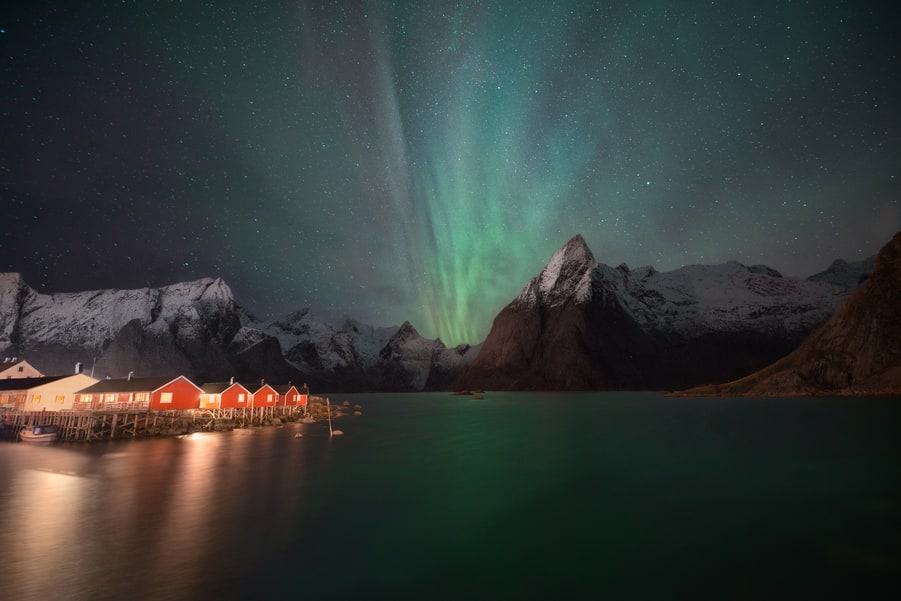
Learn how to read the Northern Lights forecast
3. Look for clear skies to photograph the Northern Lights
It could be the biggest Northern Lights display of the year, but you'll miss it if the skies are cloudy. Try to go to an area withpotential clear skies before photographing the Aurora.
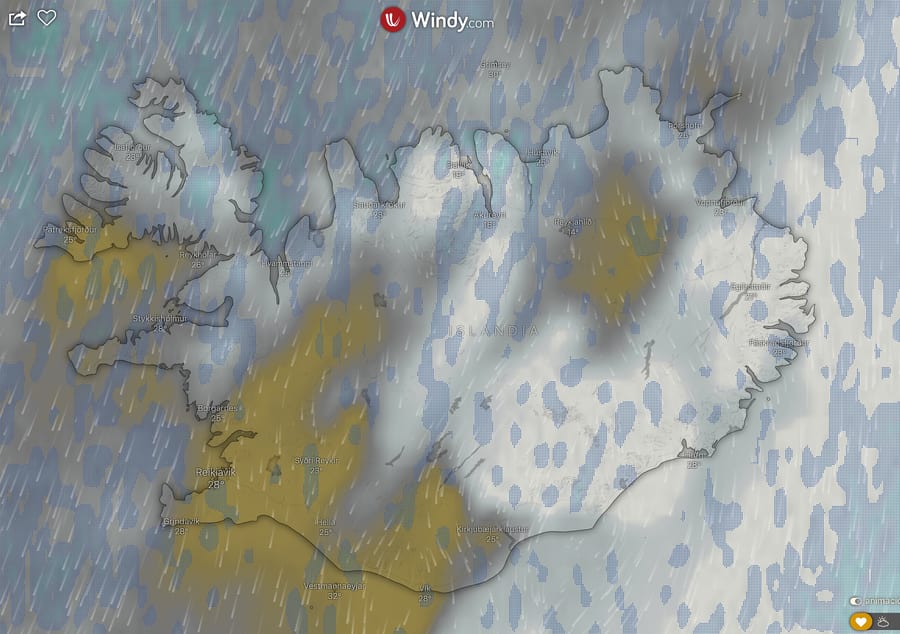
Look for clear skies to photograph the Northern Lights
My favorite weather forecast sites for the Aurora, depending on your location, are:
- Windy – General – Any location
- Vedur – Iceland
- YR – Norway
- Weather GC – Canada
- SAA – Finland
4. Use the best app to photograph the Northern Lights
Even if the forecast isn't very promising, the Auroras are unpredictable and may appear suddenly. If you don't want to miss the show, I recommend you download the best Northern Lights app, "My Aurora forecast." Not only is it free, but it also includes alarms and notifications in case there is a sudden KP increase in your location.
Also, this app for photographing the Northern Lights will show you the Aurora forecast by the minute, hour, and day, and the cloud coverage in your location. For me, it is one of the most effective and simple Aurora apps.
5. Shoot a Northern Lights time-lapse
If taking pictures of the Northern Lights is exciting, imagine capturing the lights dancing in the sky. The only way to capture this movement with the highest quality is by shooting aNorthern Lights time-lapse.
To do this, use an intervalometer and setintervals of 1 second. Simply take into account the camera settings for Northern Lights photography explained above.
Plan at least 100 to 300 shots to capture the movement of the Aurora. Then, put them together using the LRTimelapse software. The result will leave you in awe!
6. Get inspired by the best Northern Lights images
Do you need some inspiration to photograph the Northern Lights? Take a look at this compilation of the best Northern Lights images!
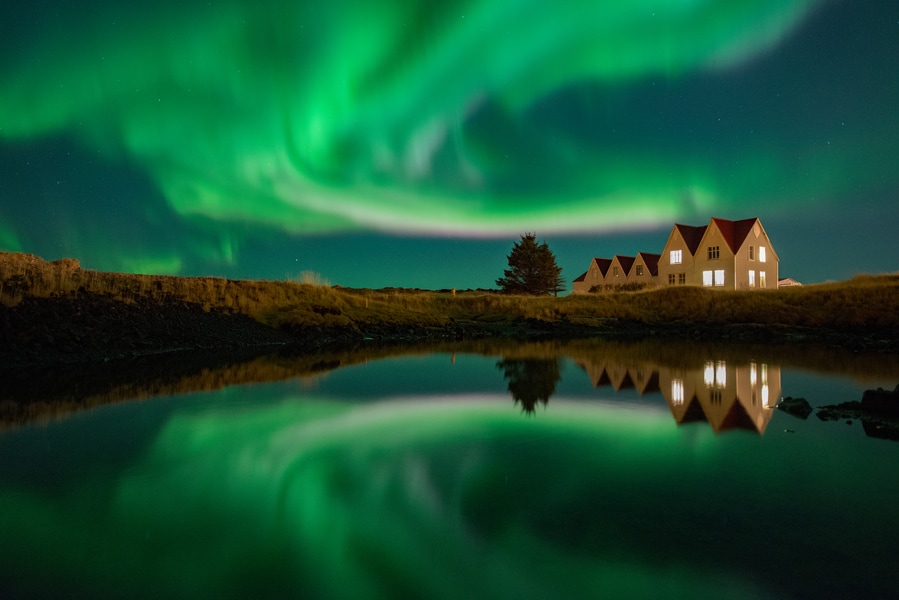
Get inspired by the best Northern Lights images.
These images will show you how some of the top landscape photographers compose and capture the best Aurora images worldwide in places like Lapland, Iceland, Greenland, Canada, Alaska, and Antarctica.
7. Join me on my next CAPTURE THE ATLAS PHOTO TOUR
You may already knowthe best camera settings for Northern Lights photography, but you might still encounter another series of challenges that prevent you from making your dream come true. Perhaps you don't have a photography buddy to travel and spend the night with while waiting for the "Green Lady". Or maybe you just don't have the time to plan a Northern Lights trip on your own or don't feel safe in an unknown location.
In any case, if you're a passionate photographer and you'd like to join aNorthern Lights photography tour, I would be delighted to have you in one of our Iceland photo tours or our Lofoten Islands photo tours in Norway.
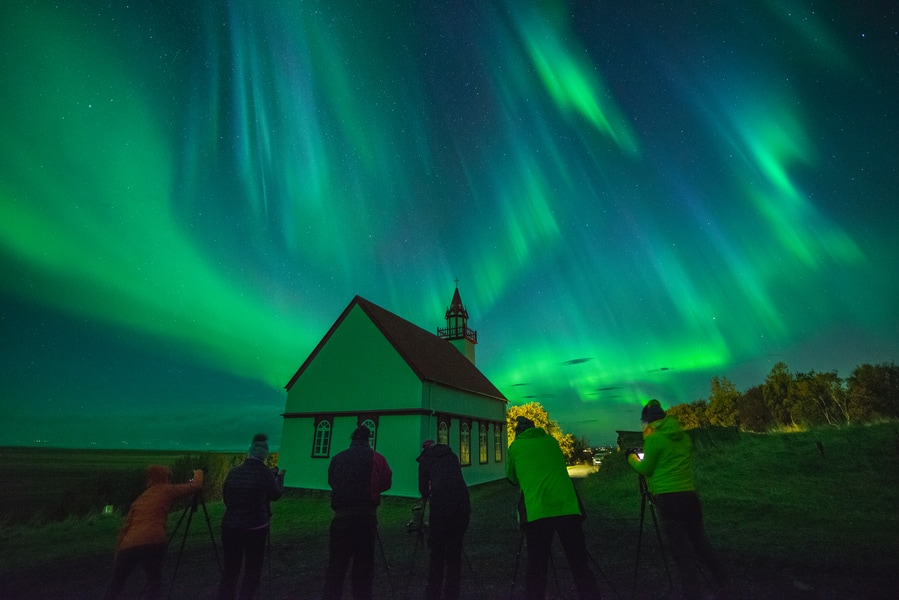
Join me on the next Capture the Atlas photo tour
Our groups are very small (only 6 – 8 participants), and I will make sure that you learn how to capture the best Northern Lights photos.
I run these tours with otherprofessional Northern Lights photographers who have lots of experience photographing the Aurora.We're very knowledgeable about the terrain, and we know the best locations for capturing the "Green Lady."
Besides, in ourNorthern Lights photo tours, we'll photograph some of the most incredible landscapes on our planet. Would you like to join us?
Conclusion
Photographing the Northern Lights isn't an easy task.
Northern Lights photography is probably one of the most challenging genres to learn and master. There are many factors that you can't control, such as the Aurora activity or cloud coverage.
However, if you know your camera gear, thebest Northern Lights settings, and how to create interesting compositions, your chances of capturing beautiful Aurora images will increase drastically.
I hope thisNorthern Lights photography guide helps you succeed in yourAurora shooting experience and you can return home with fantastic Aurora photographs.
Happy chasing and clear skies!
GET YOUR FREE EBOOK!
- PHOTOGRAPHING THE NORTHERN LIGHTS -
BEST SETTINGS, GEAR, PLANNING, TIPS, AND MORE!

How To Capture Northern Lights On Iphone
Source: https://capturetheatlas.com/how-to-photograph-the-northern-lights/
Posted by: mclendondises1988.blogspot.com

0 Response to "How To Capture Northern Lights On Iphone"
Post a Comment